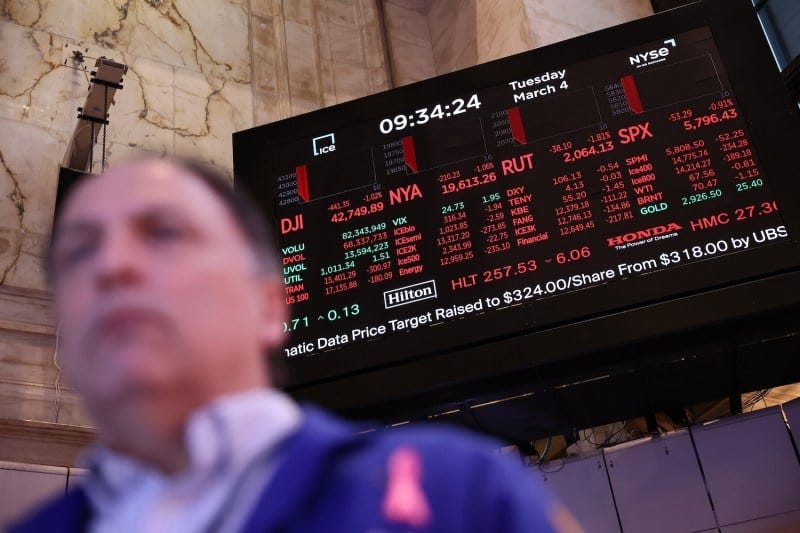Trump’s Economy Is Flashing Red
Trade wars, rising prices, falling confidence, and sinking stock markets are not what Wall Street or Main Street voted for.
By Keith Johnson, a reporter at Foreign Policy covering geoeconomics and energy.
Traders work on the floor of the New York Stock Exchange in New York City on March 4. Michael M. Santiago/Getty Images
Just a few weeks before the 2024 presidential election in the United States, the Economist explained why the country’s economy was the “envy of the world,” with low unemployment, inflation under control, and a growth rate unmatched by any advanced economy.
Trump’s Second Term
Even so, widespread domestic dissatisfaction with the world’s top-performing economy helped propel Donald Trump to victory. It was also partly due to the prices of grocery staples such as eggs—something Trump promised to lower early on in his second term as president but has yet to fully accomplish.
Fast-forward a few months, and the U.S. economy is not the envy of many anymore. There are few signs of optimism among the traditional economic indicators, from capital markets to consumer confidence. Trump has, as promised, brought an economic revolution to the United States—just not in a good way.
U.S. stock markets have not only given up all the gains they piled on in the wake of Trump’s triumph, they are still sinking. Every other day brings a new “worst day since” headline for either the broad S&P 500 index, the narrower Dow Jones Industrial Average, or the tech-heavy Nasdaq. Markets are currently ruled by “extreme fear,” according to CNN’s Fear and Greed Index.
Bond markets, those traditional and ruthless vigilantes, are of two minds. Recently, though, the predominant concern is that Trump’s economic policies, especially on trade, will be such a drag on growth that the Federal Reserve will have to cut interest rates to counteract the inflation that Trump is also baking in with his import taxes and higher prices for businesses and consumers. (He launched his biggest trade war yet earlier this week and then carved out exceptions for the automotive industry after the heads of three major U.S. automakers got him on the phone; he also exempted one of his targets, Mexico, after another phone call.) Global bond markets are holding a yard sale because of Trump’s tariffs and economic arson, and also because Europe has decided to spend big on bombs and missiles.
Not to be overlooked is a wonky bond metric, an inverted yield curve on a couple of short-maturity U.S. government bonds, that has historically been a harbinger of recession.
Consumer confidence is dropping faster than it has in more than three years because consumers are worried about higher prices from Trump’s tariffs on the United States’ top trading partners. (Trump’s commerce secretary, Howard Lutnick, insists that the negative economic data from recent weeks is actually Biden administration data.)
One seemingly bright spot, a manufacturing index known as the PMI, is itself a canary in the coal mine because the uptick in manufacturing activity is a front-loaded response to get ahead of the avalanche of trade barriers and rising prices for manufacturing inputs.
Despite Trump’s entreaties, farmers are not “having fun.” China’s retaliations against the latest round of U.S. tariffs will target more than $20 billion in dwindling agricultural export markets, which were already small due to Trump’s trade wars during his first term.
The U.S. dollar keeps falling—and not just against European economies but against the entire basket of other world currencies. That is the opposite of what should happen if tariff walls are erected, which indicates a much deeper lack of confidence in the greenback.
The employment picture doesn’t look much better, though the official numbers won’t be out until March 7. One early bellwether on U.S. payrolls indicates a sharp slowdown in new hiring last month. Economists making economic growth predictions consistently lowballed what Trump would actually do on trade and are now hustling to downgrade their outlooks for 2025. One much-watched metric actually predicts a severe contraction in U.S. economic growth in the first quarter, a massive shift from expected growth just weeks earlier.
Foreign Policy Magazine



